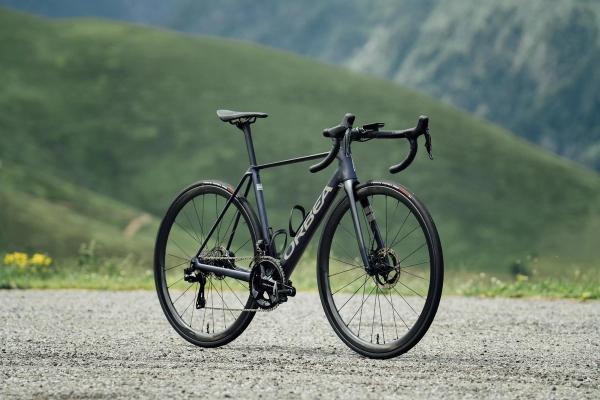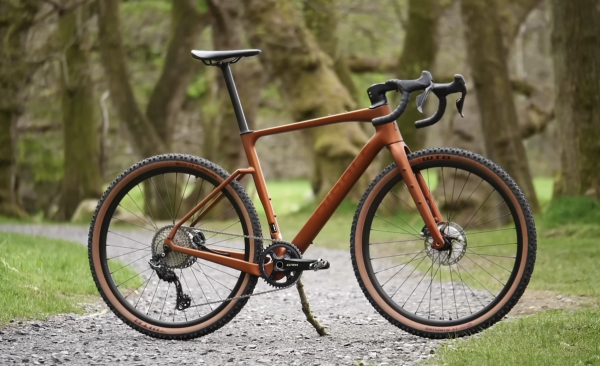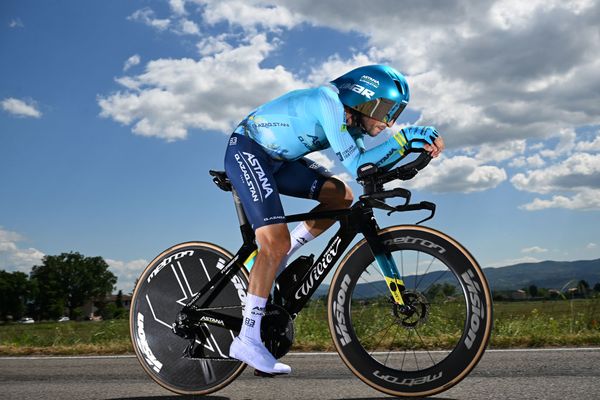Gravel vs road: how much slower is a gravel bike?
Conor puts the Canyon Grizl and Orbea Orca to the test to find out which is faster
Tom Hallam-Gravells
Online Production Editor
There is a bewildering variety of bikes available, with plenty of crossover between disciplines. Over the last ten years, a gravel boom has opened up a whole new type of riding for many, and gravel bikes have become one of the most popular options.
Some are still sceptical about gravel steeds, usually because they’re slower than road bikes in virtually every road scenario. But how much will a gravel bike slow you down, and is it a worthy sacrifice to make for multi-terrain adventures?
Conor Dunne put the theory to the test to find out.
Read more: What should I buy - a road bike or a gravel bike?
Bikes for the test
For the test, Conor needed a pure gravel bike, something at home on the rough stuff. There was no better choice than the Canyon Grizl.
To make the test as accurate as possible, Conor set the bike up in full gravel mode, complete with 50mm wide Pirelli Cinturato tyres - so wide they share a name with car tyres!

© GCN
The Canyon Grizl
In the opposition corner, we used the Orbea Orca Aero. As the name suggests, it’s a pure aero racing machine that’s been tested at the sport’s biggest races. It was complete with Pirelli P Zero Race tyres in a 28mm width, creating a pure racing machine.

© GCN
The Orbea Orca Aero
This won’t come as much of a spoiler, but the Orbea Orca Aero is going to be faster on the road. The question is, by how much? Here’s how they compared.
Read more: New Orbea Orca goes all-in on climbing performance
On the flat
For the test, Conor rode the same 1km stretch of flat road three times on each bike. The first run was at 24km, then around 37km, before finally riding behind a motorbike to replicate a draft effort. We then compared the power required to reach those speeds for both bikes. Here were the results:
25 kph:
- Orbea Orca: 181 watts (averaging 24.1 kph)
- Canyon Grizl: 189 watts (averaging 23.9 kph)
37 kph:
- Orbea Orca: 432 watts (averaging 37 kph)
- Canyon Grizl: 423 watts (averaging 35.2 kph)
Motor-paced effort:
- Orbea Orca: 379 watts (averaging 49.3 kph)
- Canyon Grizl: 408 watts (averaging 47.9 kph)

© GCN
The Orca was faster on the flat, but not by much at lower speeds
Unsurprisingly, the Orca was faster in every scenario, but the margin only became significant as the speed went up. That difference peaked during the motor-paced effort when Conor went over 1 kph faster, despite putting out 29 fewer watts.
At 25 kph, a speed many amateur cyclists average on rides, there was only an eight-watt difference, albeit the Grizl was also a fraction slower. That’s only a minor performance difference, though, one that you’d struggle to notice out on the road.
Climbing
Next up was a hill climb. Conor selected a fairly typical UK climb, the type you’d regularly encounter on a group ride. It’s only 600m long but packs in some nasty gradients. Technically, this isn’t the favoured terrain for either bike and each bike has its advantages. For the Grizl it’s the wider gearing, while the Orca has an aero advantage on the shallower gradients - as you can imagine, Conor was flying up at WorldTour speeds to really take advantage of this.

© GCN
The Grizl matched the Orca on the climb
So, which bike was faster up the climb? Neither. Over the effort, both bikes posted virtually identical times. Conor even followed it up with a 350-watt controlled effort, and the margins between both bikes were minuscule.
Although the Orca isn’t optimised for climbing, it was slightly surprising that the Grizl fared so well.
Read more: Riding in the saddle versus standing - which is better?
Acceleration
Acceleration is an attribute associated with racing, but it has real-world impact, like when pulling away from a junction or when trying to regain a friend’s wheel in a group ride.
Testing acceleration isn’t that easy, but Conor devised a simple test, completing a 10-second acceleration from a standing start to see what speed he could reach. This should have been a very one-sided affair in favour of the Orbea and, giving away the result, it was.
- Orbea Orca: 30 kph
- Canyon Grizl: 20 kph

© GCN
Acceleration proved to be the biggest difference between the two bikes
Of all the tests, this was arguably the largest difference. The Orca was 50% faster than the Grizl, reaching speeds of 30 kph - nothing too crazy, although Conor isn’t known for his explosivity. This difference would be smaller in real-world situations, as it’s unlikely you’re doing 10-second all-out efforts every time you pull away from a traffic light.
How slow is a gravel bike?
That’s all of the tests concluded so, will a gravel bike slow you down compared to a road bike? Yes, although that won’t be surprising to anyone.
The difference in speed, or lack thereof in certain scenarios, is the most surprising element. On the climb, there was virtually no difference between the two bikes, despite the Grizl’s heavier weight.
On the flat, the bikes were fairly evenly matched at 25 kph, although a chasm opened up at speeds above 35 kph, but most cyclists don’t reach those leg-burning velocities.
Things became clearer in the acceleration test, where the Orca blew the Grizl away. That will have an impact on rides, maybe in overlooked ways such as fatigue accumulation, with accelerations taking much more effort on the Grizl.
So, is the Grizl a good alternative to a road bike? It depends. If you’re performance-oriented or ride at higher speeds, the Orca is clearly the better option. At lower speeds, the lines become more blurred. The Orca is still faster, but only marginally. If you’re happy with that slight performance sacrifice, the Grizl can then open up a whole world of off-road riding.
Would you swap a road bike for a gravel bike? Let us know in the comments. For more tech news, features and pro bikes, head over to the Tech section on the GCN website, linked here.









.jpg?w=600&auto=format)



